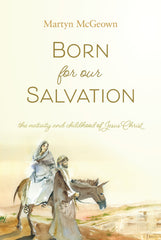Your cart is empty now.

The Fruit of the Spirit: Longsuffering
The Queen of Virtues
Longsuffering begins, Rev. Smit writes in chapter five of The Fruit of the Spirit of Jesus Christ, “the second main group” of the fruit of the Spirit. The first group of three virtues is inward looking, while this second group of three “seems to highlight virtues that are evident in our outward dealings and communication, especially with those of our church families and covenant homes.” Just as the importance of love is highlighted by its position at the head of the first group of virtues, so longsuffering is highlighted because it is first in the second group – before gentleness and goodness. Love is first, the king of all virtues. And longsuffering, according to Rev. Smit, “certainly must be queen.”
 If you have seen another translation’s rendering of Gal. 5:22-23, then you know that the word the KJV translates as longsuffering is often translated as patience. We use these words interchangeably, Rev. Smit notes, in our “common daily conversation,” Rev. Smit writes, “Although they may seem to be almost identical terms, according to Colossians 1:11 patience and longsuffering are shown to be both closely related and yet distinct virtues.”
If you have seen another translation’s rendering of Gal. 5:22-23, then you know that the word the KJV translates as longsuffering is often translated as patience. We use these words interchangeably, Rev. Smit notes, in our “common daily conversation,” Rev. Smit writes, “Although they may seem to be almost identical terms, according to Colossians 1:11 patience and longsuffering are shown to be both closely related and yet distinct virtues.”
Because patience is closely related to longsuffering Rev. Smit briefly defines and explains patience. What is patience? How did saints in the Bible demonstrate patience? Does God have patience? Do you have patience? Pages 70-72 will help you answer these questions.
Because longsuffering is distinct from patience Rev. Smit gives it separate treatment. He writes, “Longsuffering is the virtue that applies to the persons whom God providentially places upon [the child of God’s] divinely determined pathway and, as a result, with whom he cannot avoid communication and dealings.” I added the emphasis to the word persons in order to indicate that longsuffering is a virtue that has to do with our relationships with other people. Patience is broader than longsuffering, as you will discover if you read Rev. Smit’s treatment of patience. Longsuffering is narrower. It is patience with people. In longsuffering we have to do with the neighbor and our calling to love him or her as ourselves.
Rev. Smit continues his treatment of longsuffering by explaining that God is longsuffering. Do you know what it means that God is longsuffering toward his people? Read the bottom of page 72 and the top of page 73. Amazingly, God shares his attribute of longsuffering with his saints. Saints who are longsuffering are a reflection of God!
What is the longsuffering of saints? Rev. Smit writes that it means saints “bear with the weaknesses of others.” Rev. Smit provides a helpful explanation of how this longsuffering is shown to the neighbor, of the motivation for showing this longsuffering, and how this longsuffering is not a toleration of sin. Then he provides helpful biblical examples of longsuffering in action.
Are you using the Bible to regulate your relationships with the people God has placed in your life? Do you love your neighbor(s) as yourself? Do you respond biblically to the weaknesses and sins of others? This is a fruit of the Spirit of Jesus Christ that God calls his people to cultivate in their lives. I highly recommend you read this chapter for help and encouragement.
Other articles by Rev. Spronk on The Fruit of the Spirit of Jesus Christ:
The Fruit of the Spirit: An Introduction
The Fruit of the Spirit: Peace
______________________________________________________________________________________
 This article was written by guest blogger Rev. Clayton Spronk, pastor of Peace Protestant Reformed Church in Lansing, IL. Rev. Spronk will be blogging for us several times a month, taking us first through a brief study of Richard Smit's newly released book, The Fruit of the Spirit of Jesus Christ. If there is a topic you'd like to Rev. Spronk to address, please contact us.
This article was written by guest blogger Rev. Clayton Spronk, pastor of Peace Protestant Reformed Church in Lansing, IL. Rev. Spronk will be blogging for us several times a month, taking us first through a brief study of Richard Smit's newly released book, The Fruit of the Spirit of Jesus Christ. If there is a topic you'd like to Rev. Spronk to address, please contact us.
The content of the article above is the sole responsibility of the article author. This article does not necessarily reflect the opinions and beliefs of the Reformed Free Publishing staff or Association, and the article author does not speak for the RFPA.

Donate
Your contributions make it possible for us to reach Christians in more markets and more lands around the world than ever before.
Select Frequency
Enter Amount










